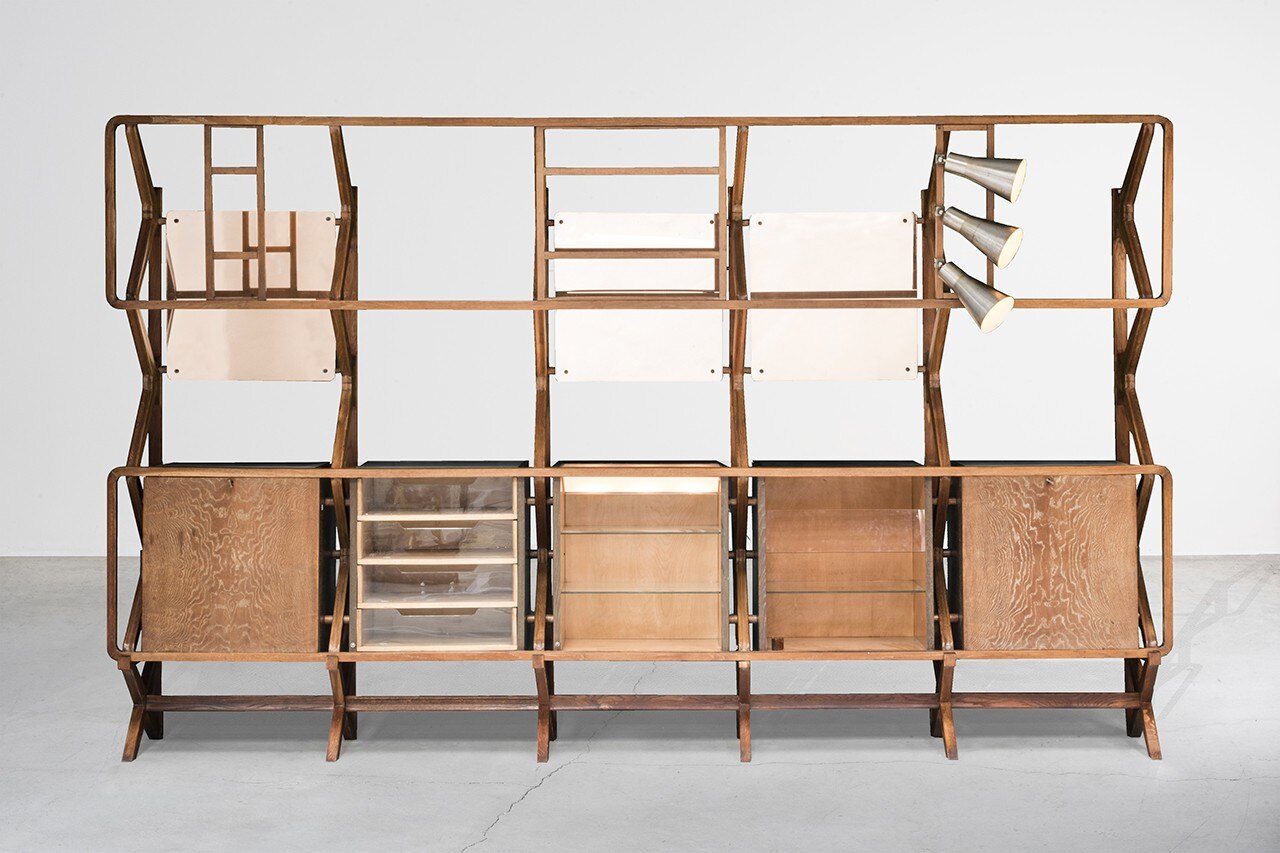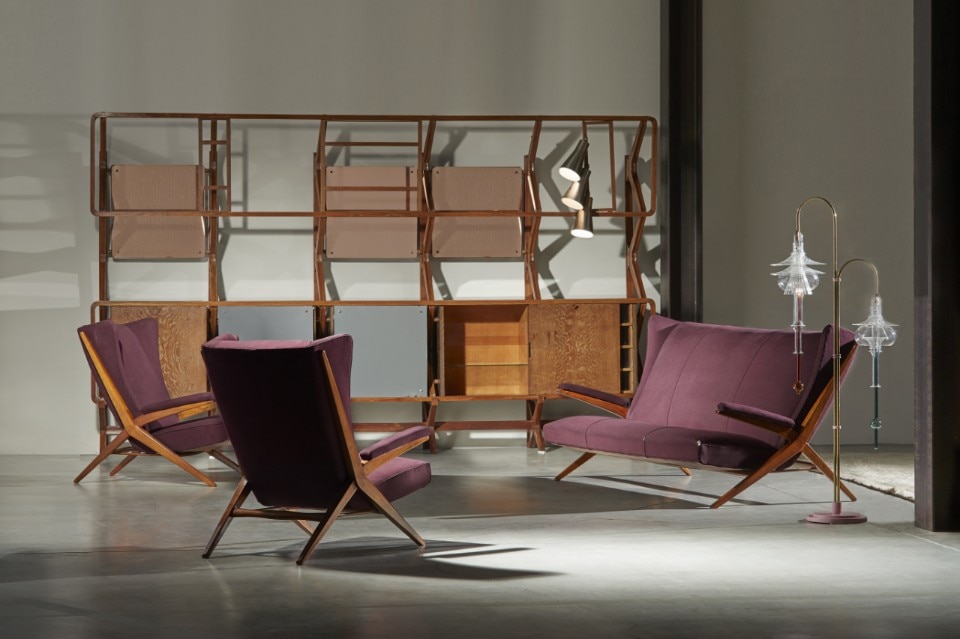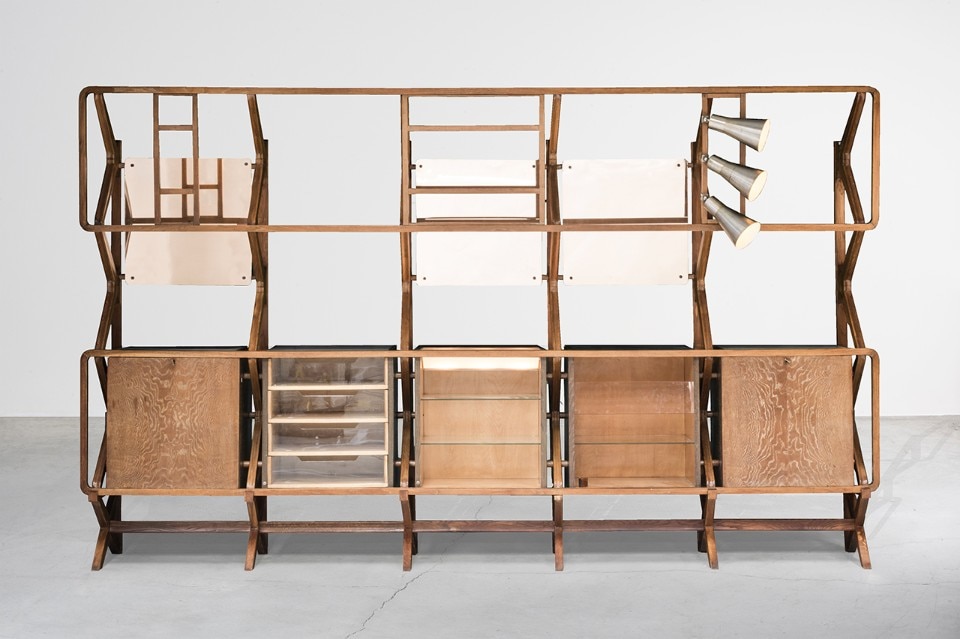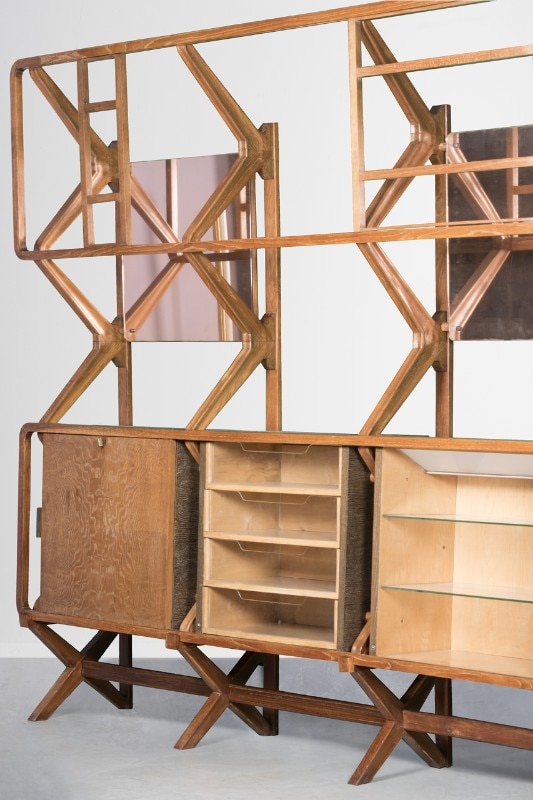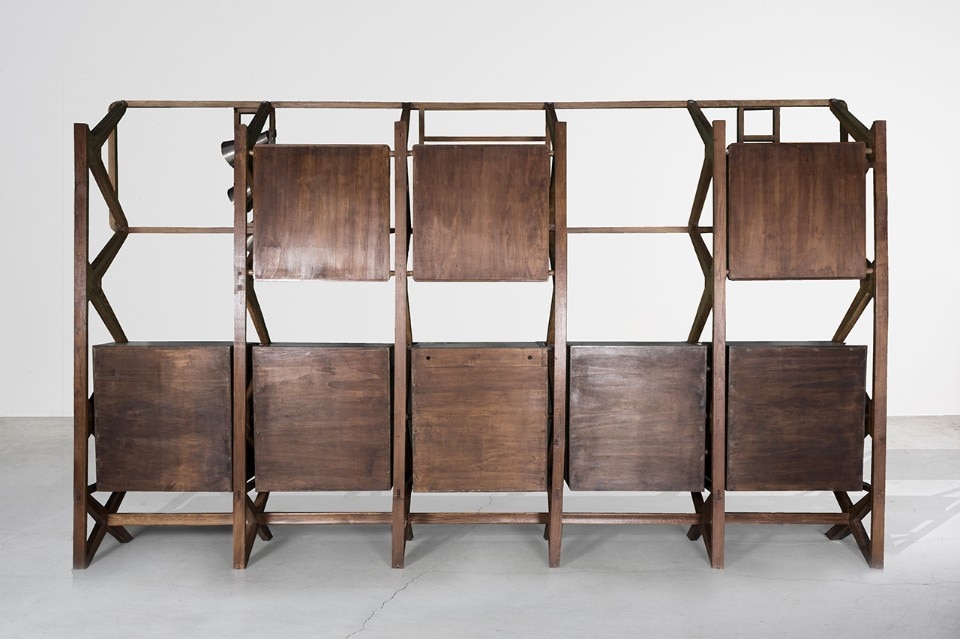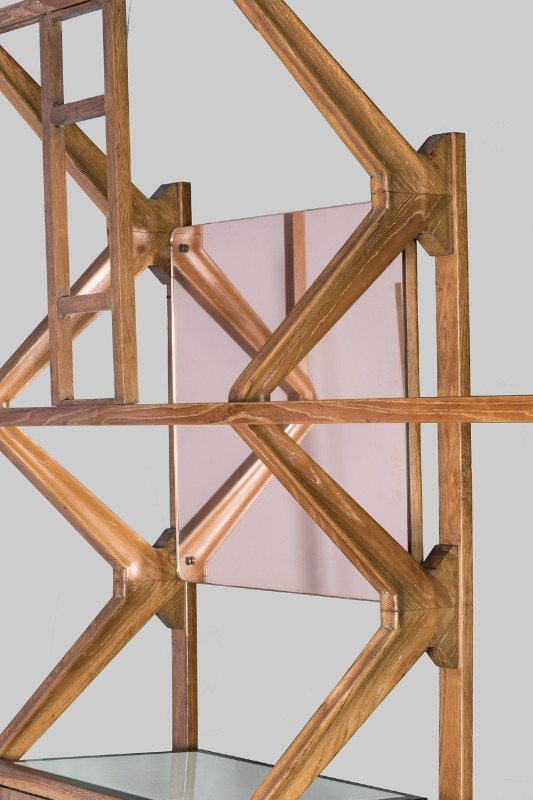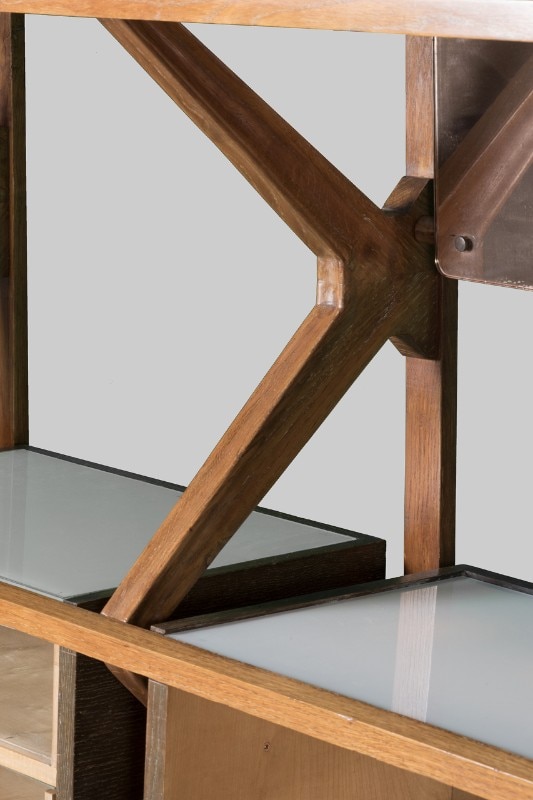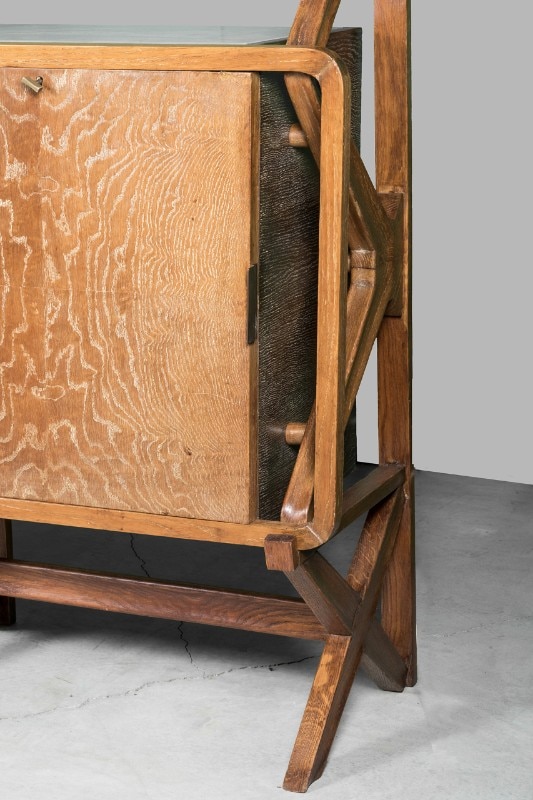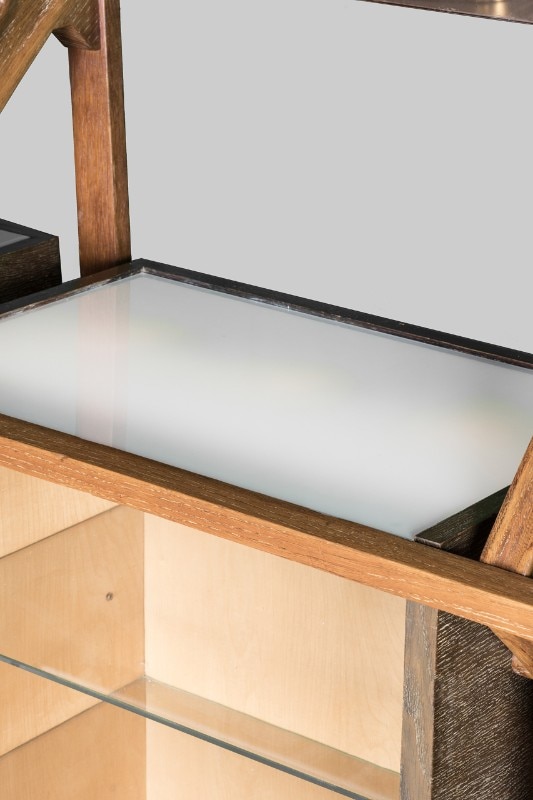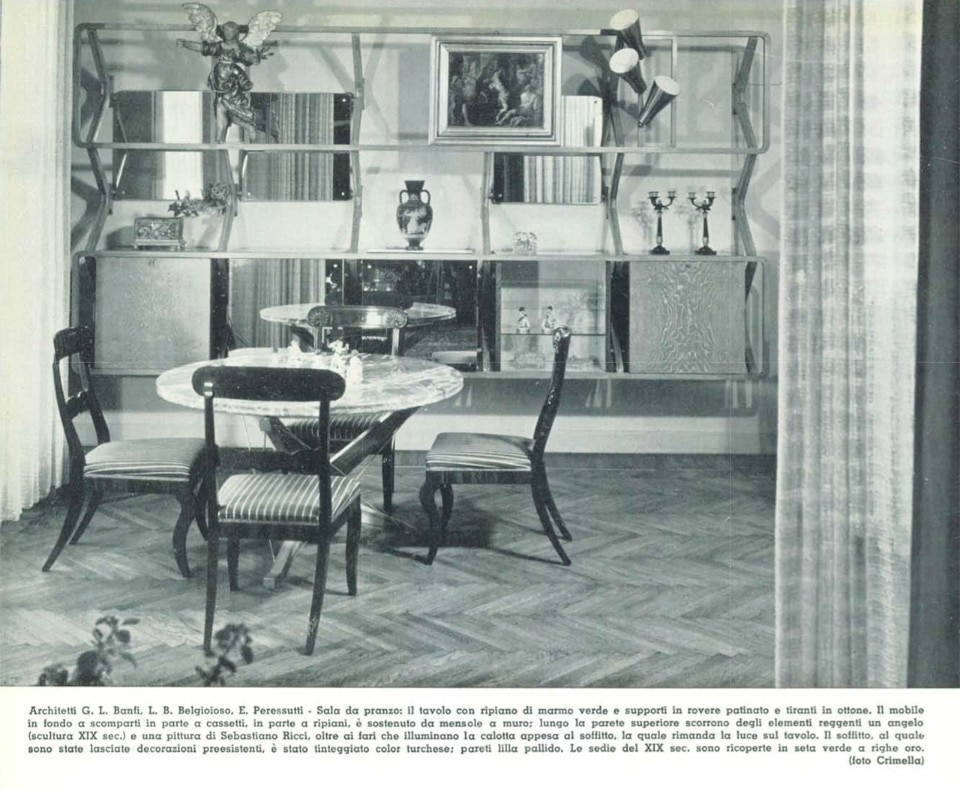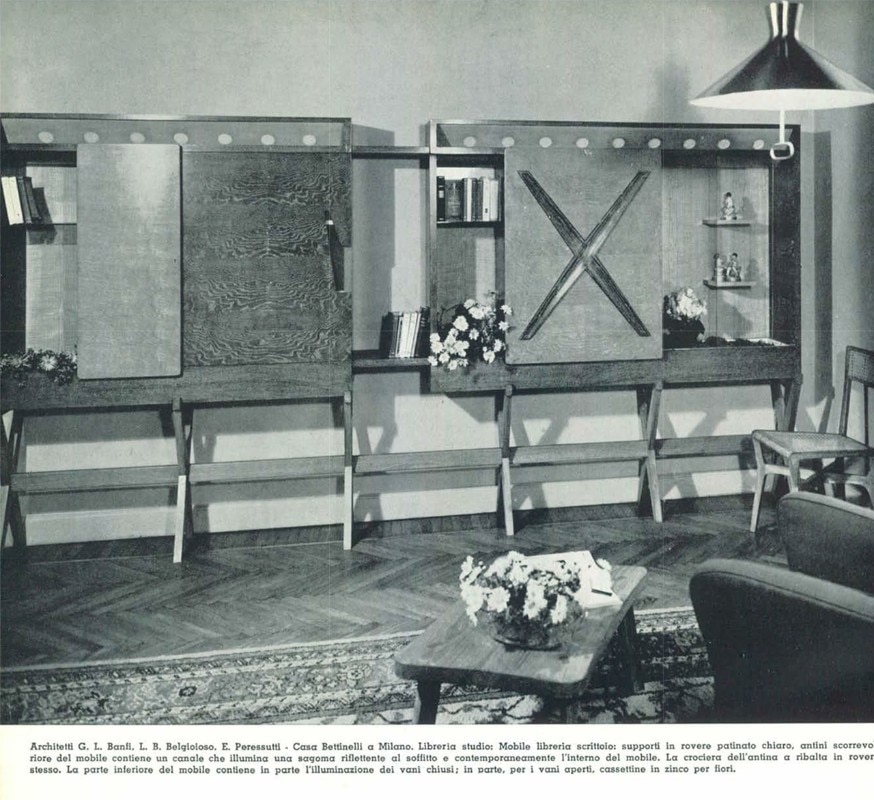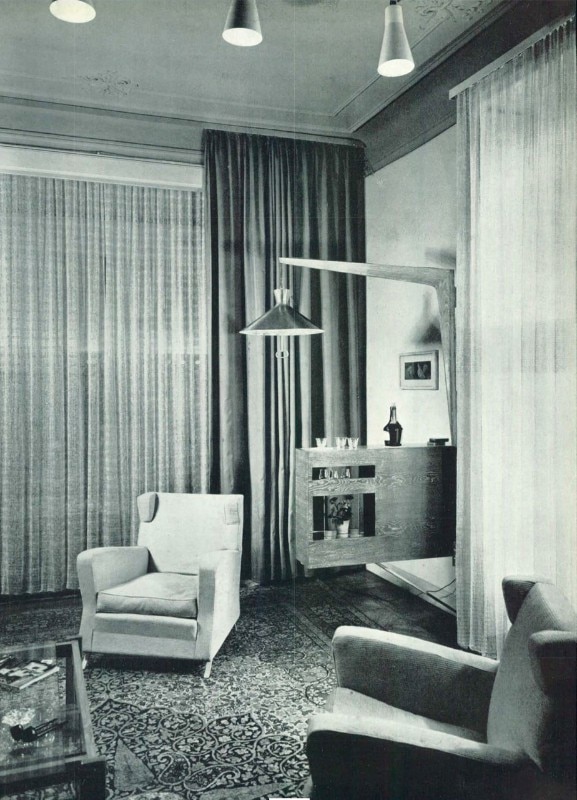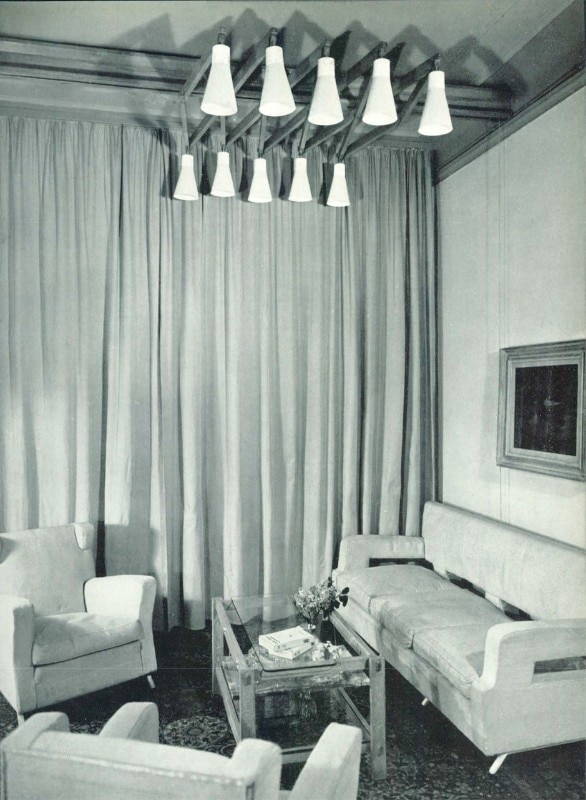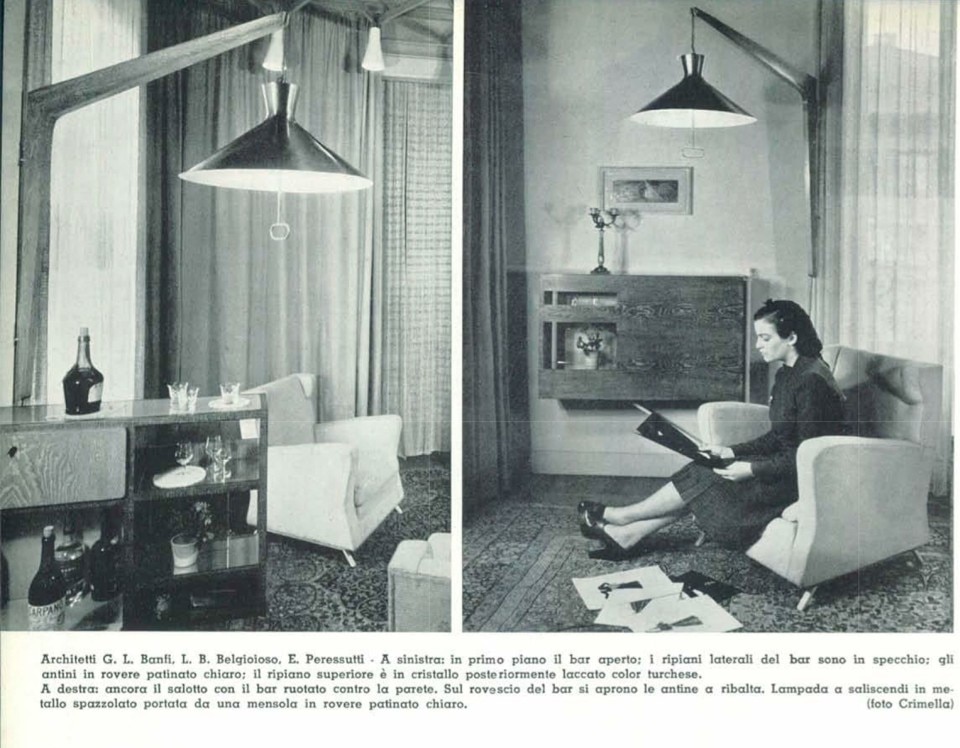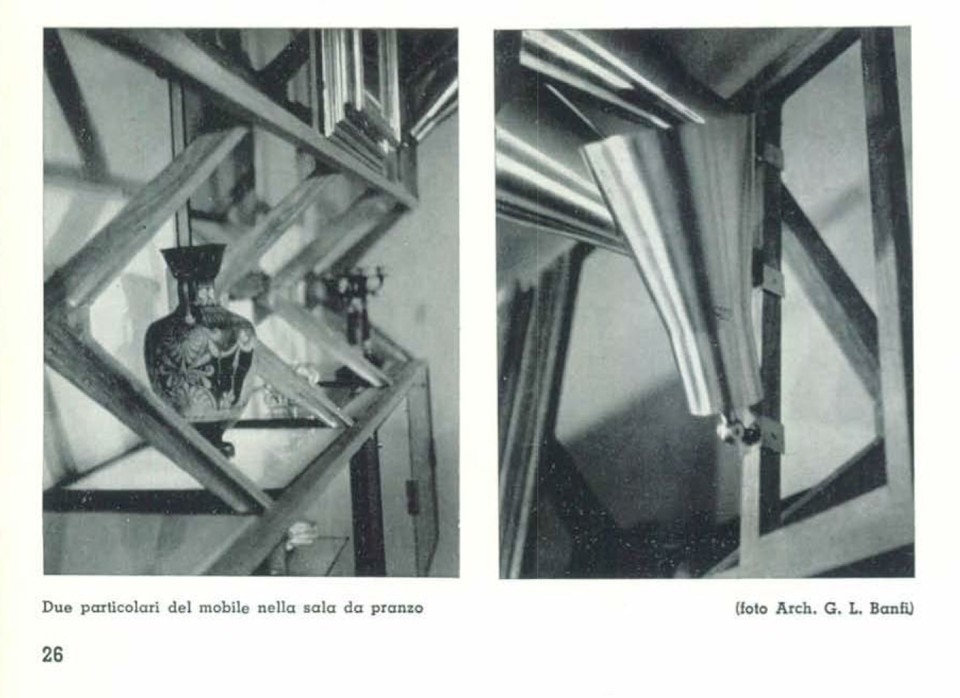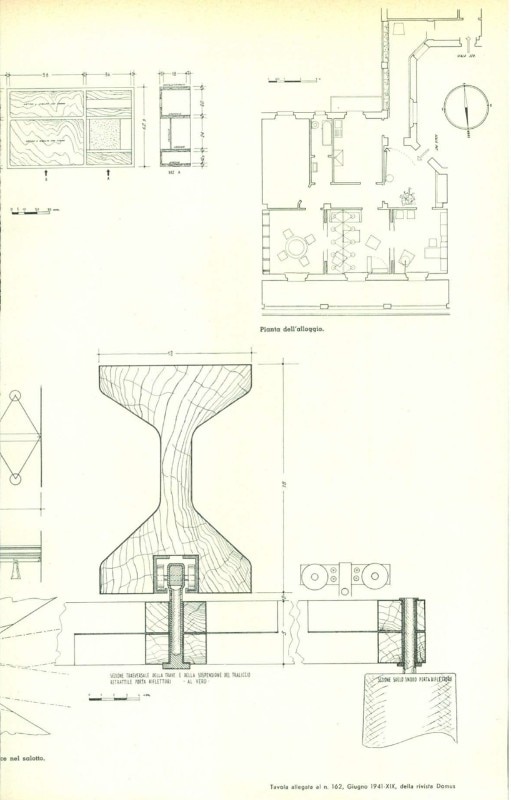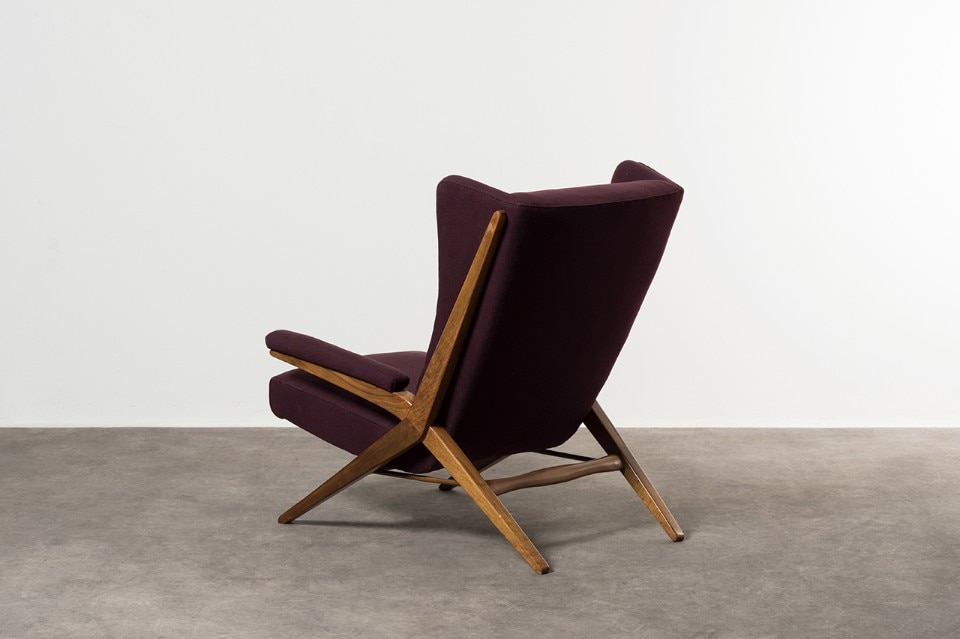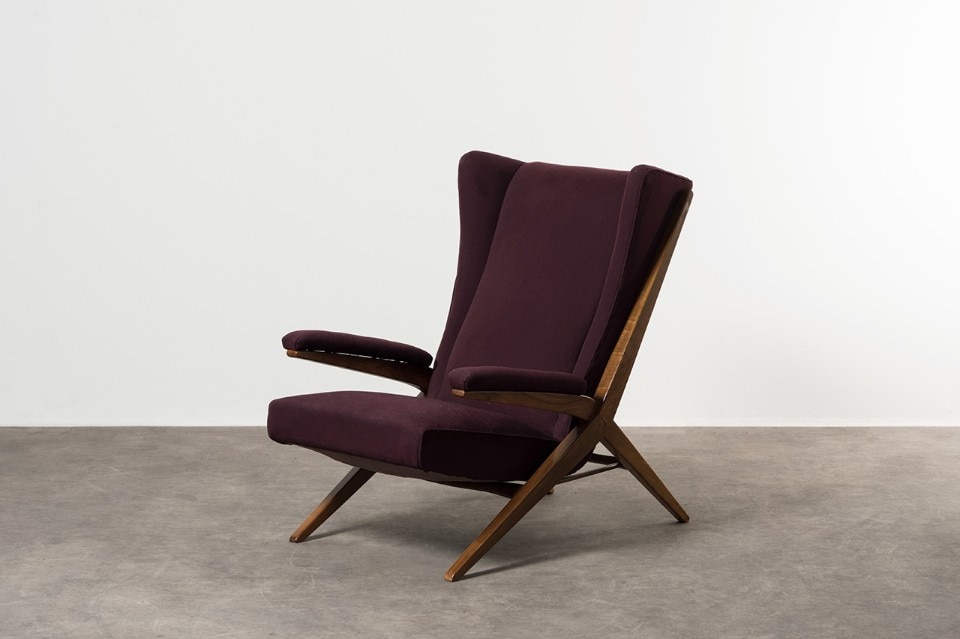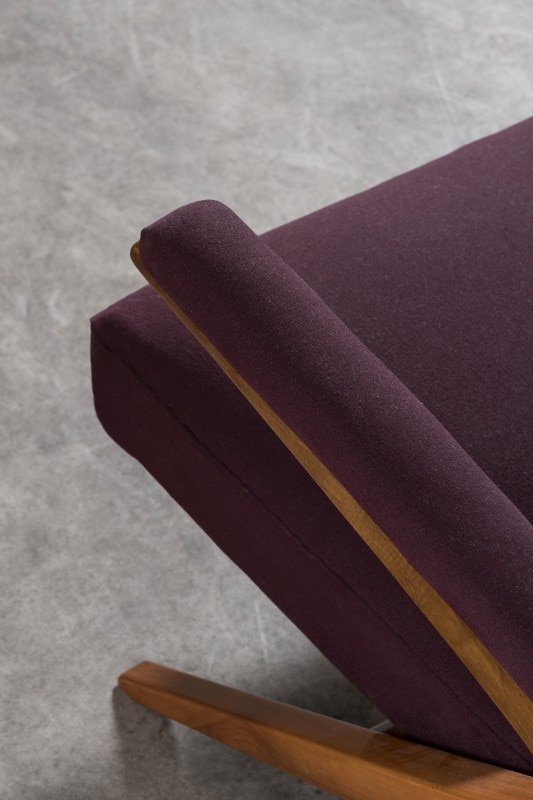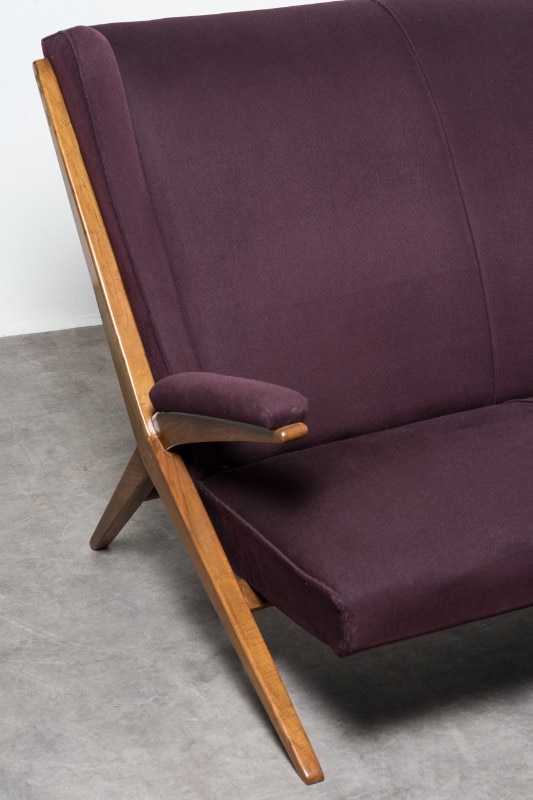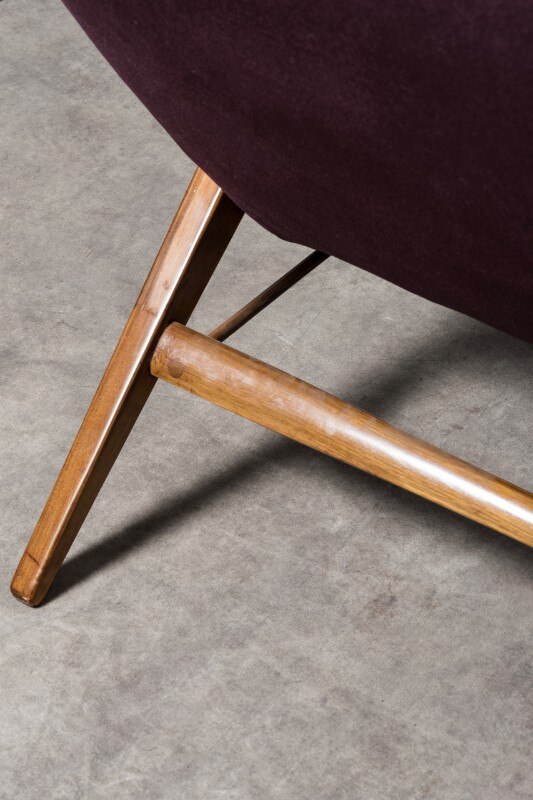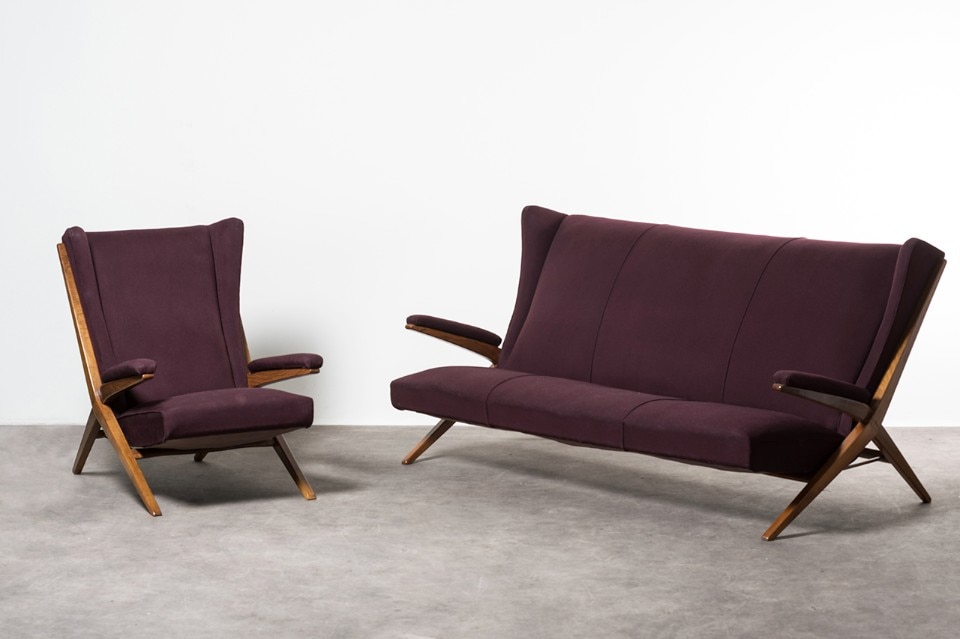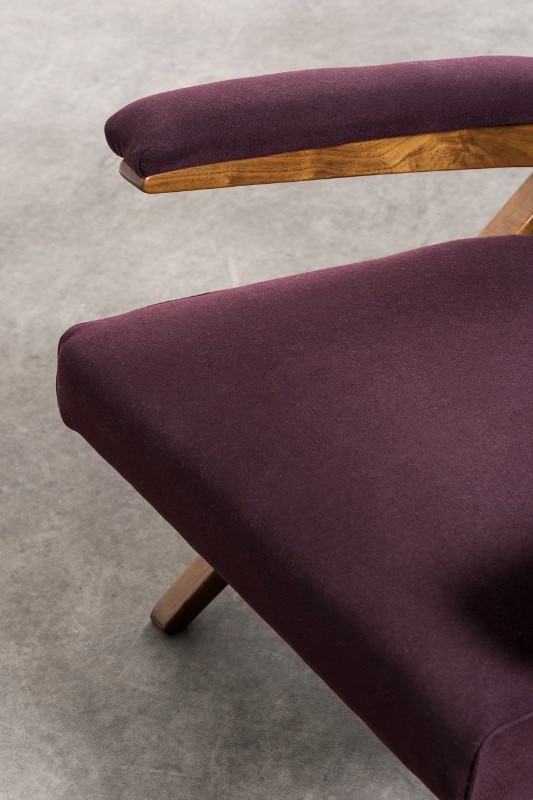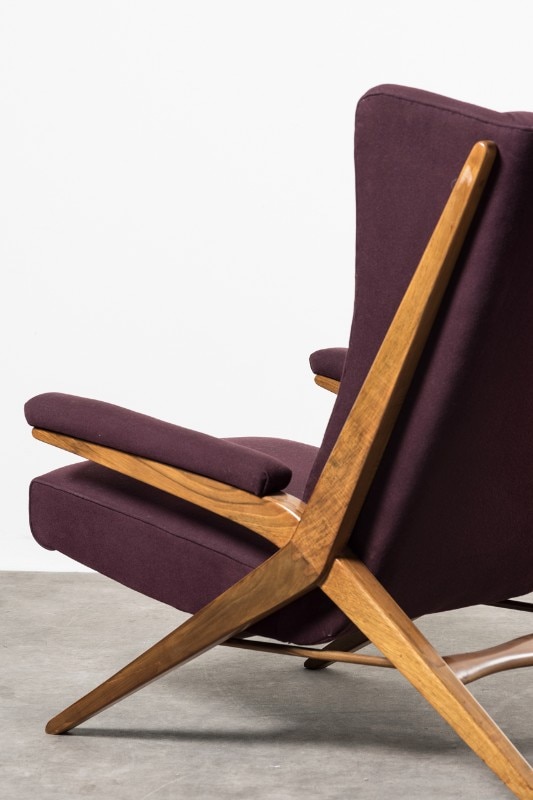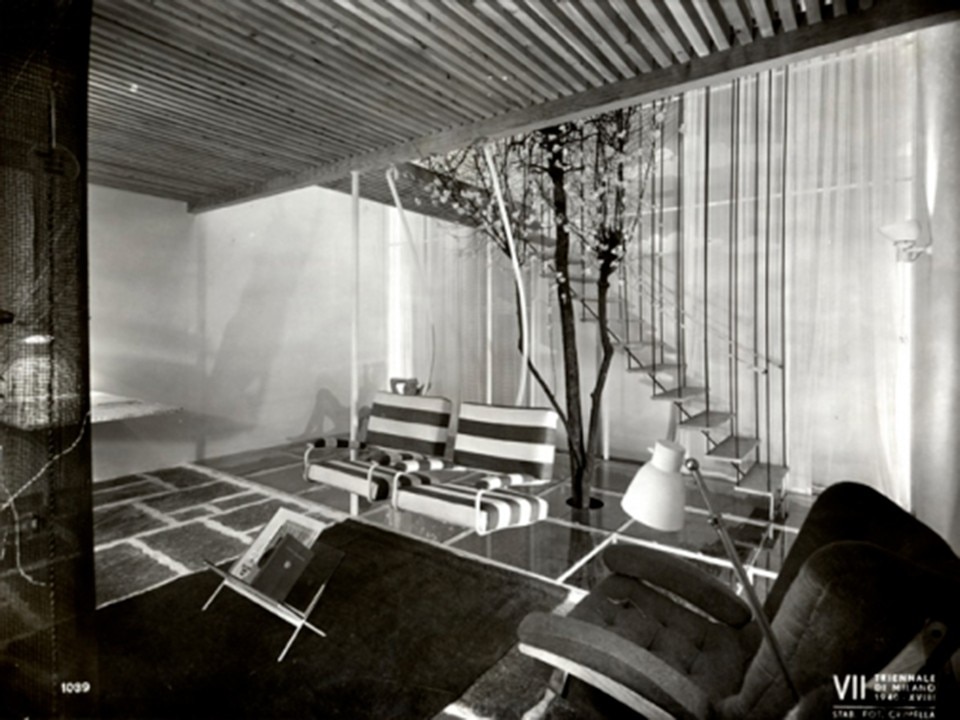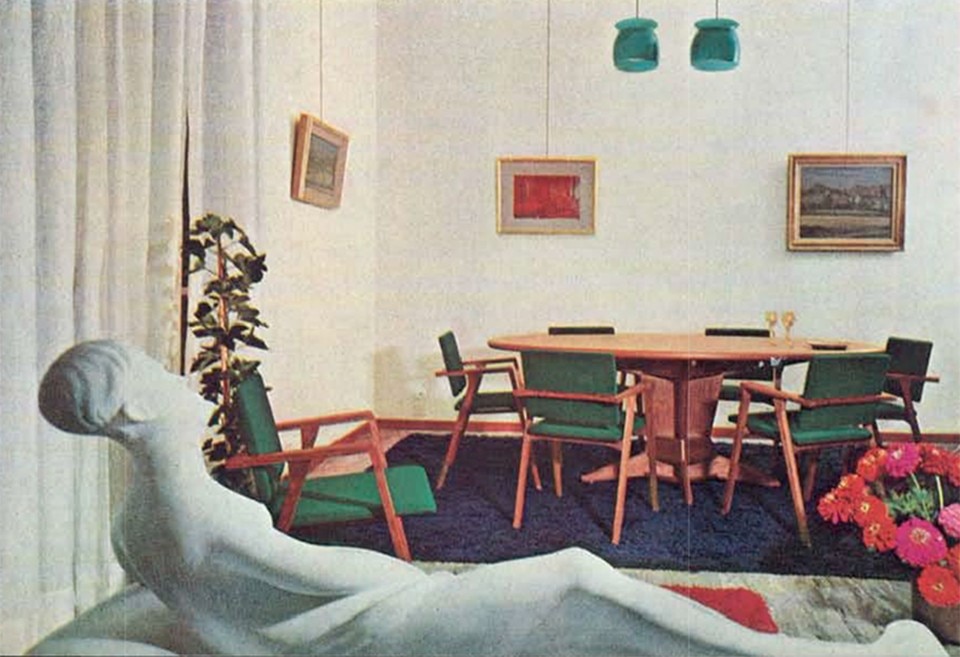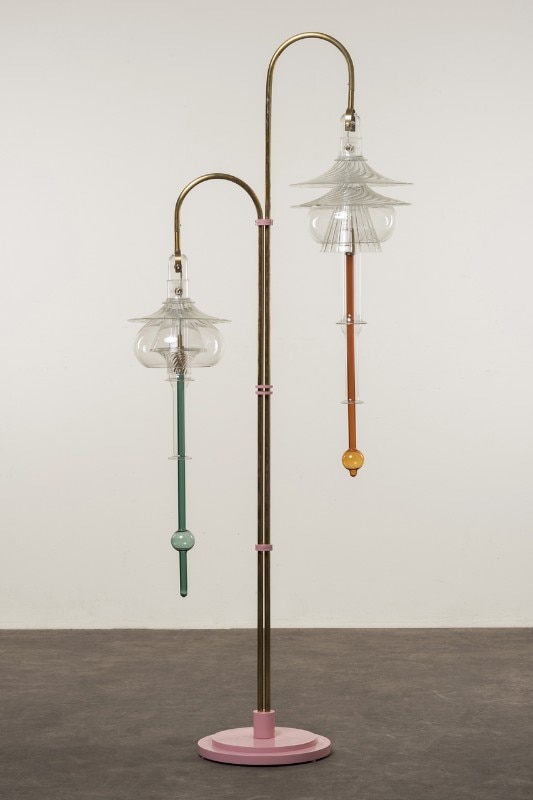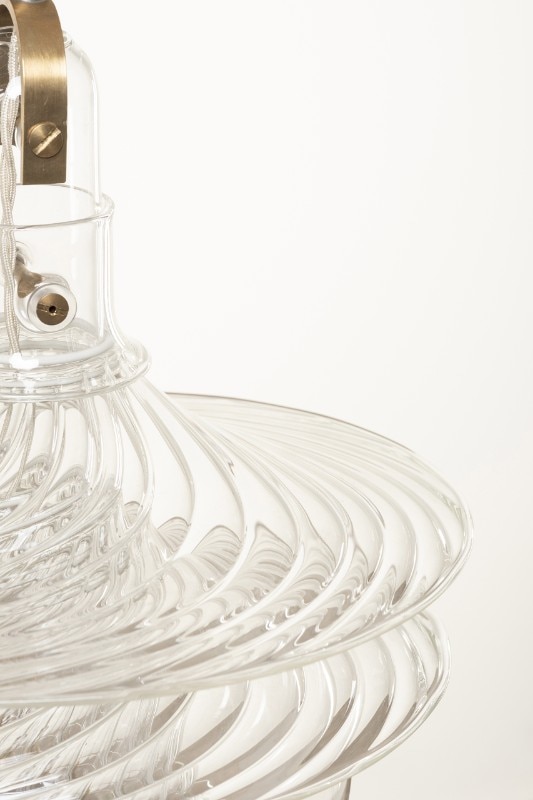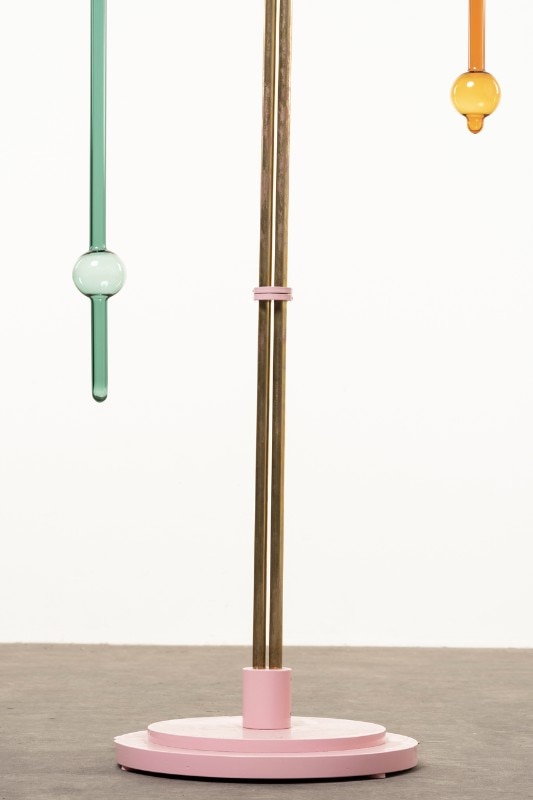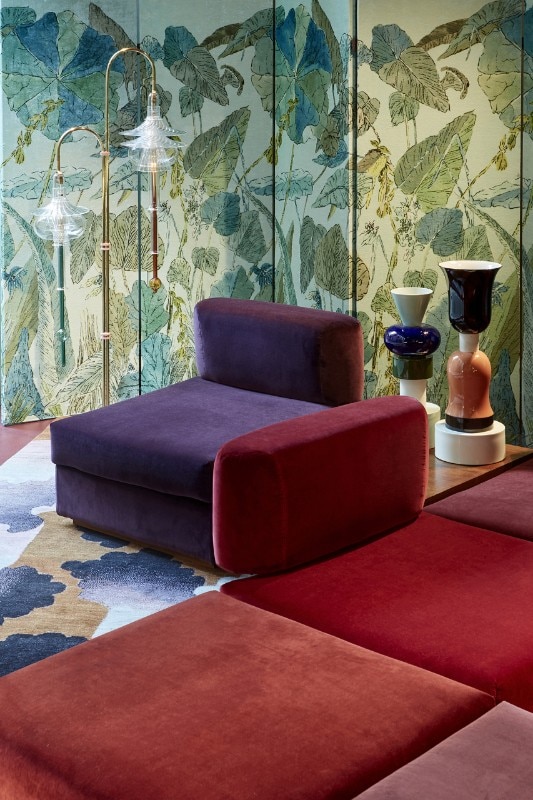In his book Il design italiano degli anni ‘50 (“The Italian design from the 1950s”, Centrokappa, 1985), Alessandro Mendini wrote that Franco Albini is “totally the greatest master of modern Italian architecture”; he also wrote that “BBPR’s was, in the 1950’s Italy, such a demiurgic architectural firm to make Italian culture tremble”.
Today, important pieces designed by Albini, BBPR and many other design and architecture masters such as Gio Ponti, Osvaldo Borsani, Gabriella Crespi, Lina Bo Bardi, are part of the rare pieces collection at Nina Yashar’s Nilufar Gallery alongside young contemporary designers such as Destroyers/Builders, Odd Matter and Sophie Dries, to name a few. The three presented here are a BBPR’s equipped furniture, a series of chairs by Franco Albini and a Bethan Laura Wood’s floor lamp.
The rare pieces collection that Nina Yashar, Nilufar’s founder, has built up over the years, emerges thanks to unique pieces made even on commission for private homes by undisputed design and architecture masters. This is the case with the carved and patinated solid oak furniture designed in 1941 by BBPR group for Casa Bettinelli in Milan and the living room designed by Franco Albini, in the 1940s as well, for another Milanese flat designed by Anna Castelli Ferrieri. We could call them modern classics, and at the same time notable exceptions. In fact, BBPR’s work is an ante litteram display cabinet, which would be perfect for a collector’s home today.
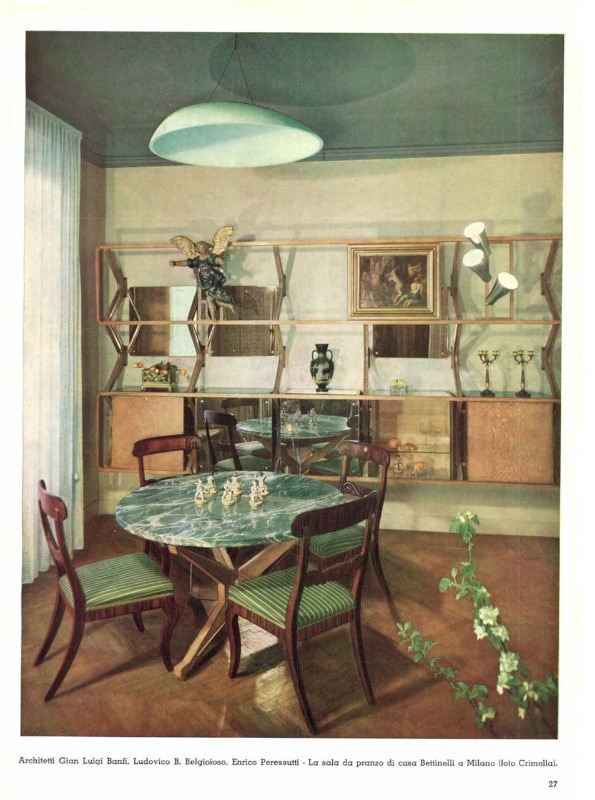
Casa Bettinelli is on Domus issue 162’s cover, June 1941. In the magazine’s pages, a long article shows the whole flat, entirely designed by the studio. The piece of furniture is in the middle of the house, acting as a scenic backdrop to the dining area, and has a very unusual function: at the top, between the uprights, two rails support a sliding trellis designed to house collectibles, and three nickel-plated metal diffusers to illuminate them. All this is enhanced by the presence of three mirrors. In the photos, we can see that the furniture hosts a baroque angel and a Sebastiano Ricci’s painting, who lived between 1600 and 1700, hanging from the trellis.
In the article, it is pointed out that these designers have often been “lined to the wall – only symbolically! – as the dangerous enemies of the history”. Therefore, we might say that the design of this furniture takes on an even stronger meaning, because it demonstrates how to integrate evidence from the past into the modern. After all, the theme was highly topical in Domus’ pages – and even today it hasn’t lost its value.
In the lower section, the furniture structure houses five sliding door cabinets veneered with patinated oak and covered with mirrored glass, partly with drawers, partly with shelves. The tops of the cabinets are made of coloured glass. The photos of the cabinet details – the uprights and the trellis with the metal diffuser – were taken by Gian Luigi Banfi himself. In addition to them, Domus presents the original design drawings.
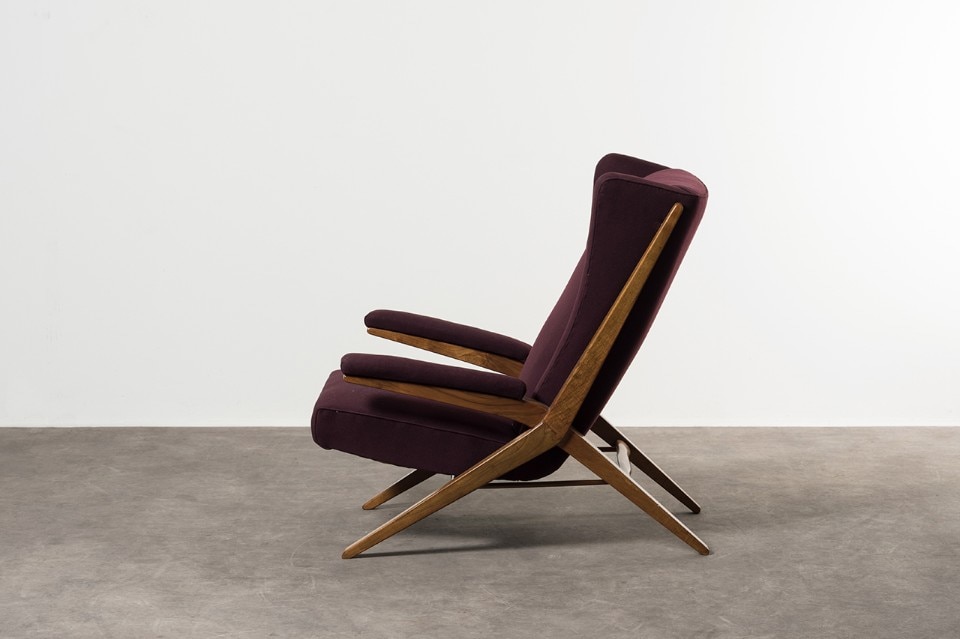
Equally fascinating is the living room designed by Franco Albini in 1946, whose particularity is being a study prototype of the famous Fiorenza’s sequence, made on request for a house designed by Anna Castelli Ferrieri in Milan. It is a set of four pieces that has remained intact, a three-seater sofa and three armchairs, bringing us back to the atmosphere designed for this Milanese flat.
The value of the studio prototype is being a fundamental piece of the architect’s design thinking: between the first and last versions designed by Albini, over a period ranging from 1940 to 1967, there is a cross-section of design history. The cross-shaped sticks that make up the structure still show the characteristic craftsmanship of the first version, which was naturally lost in the model that went into industrial production for Arlfex in 1952 and for Poggi in 1967.
The first example of the Fiorenza’s sequence, characterised by the X-shaped intersection of the structure – resembles of the Barcelona Chair designed by Mies van der Rohe in 1929 – is a chair that made its appearance in the important installation called Stanza di soggiorno per una villa (Living room for a villa), an extraordinary project conceived by Albini for the 7th Milan Triennale in 1940 in which the architect brought nature into the domestic space, giving it a highly personal interpretation.
Returning to the Domus’s article quoted at the beginning, let us not forget that “a house has its own character not only because of the things it houses but precisely because of the way in which everything – furniture, fabrics, lights, colours – takes on an unprecedented measure”. And in creating this particular atmosphere, light and colour play a fundamental role.
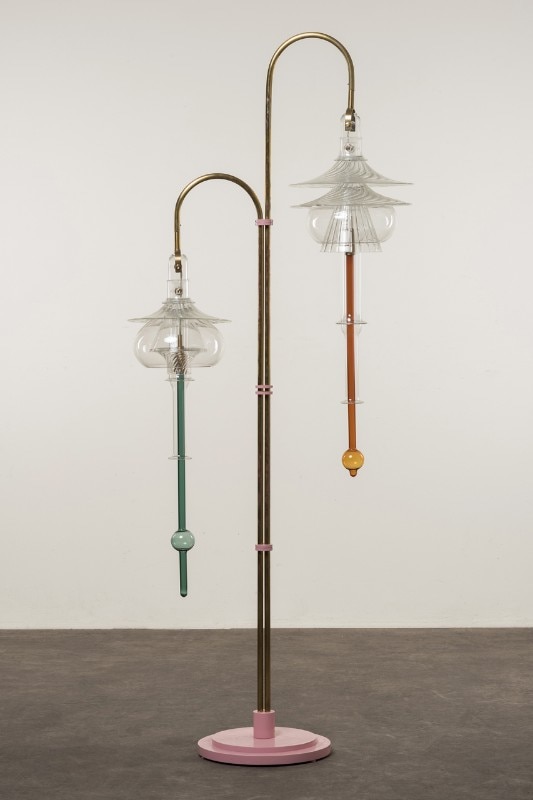
Colour is undoubtedly a key element in the Bethan Laura Wood’s work, a young and successful London-based designer who has been working with Nilufar for several years. The double floor lamp Sputnik, with its brass and steel structure, is a refined limited-edition creation.
Always interested in investigating different materials and weaving collaborations with artisans, Wood calls on the glass craftsman Pietro Viero’s expertise for this piece. Embellished with borosilicate blown glass bells, this lamp expresses the balance between classic elegance and the narrative power that the elements of nature are able to convey, transporting us into a dreamy universe, into an indeterminate time. The very particular tone of the colours – pink, sea blue, orange – is this designer’s signature with a strong identity, a lively interpreter of the contemporary.
Nilufar, a gallery set up by Nina Yashar in 1979 in Milan, has been dealing with design since the opening of its headquarters in via della Spiga in 1989. For the first ten years she dedicated herself exclusively to carpets, until she discovered a new passion for design: since then, Nilufar stands for the encounter between avant-garde and iconic pieces of the international 20th century. In 2015, Nilufar Depot opened its doors. Nina Yashar has always followed her instinct when choosing the pieces for her collection, combining passionate scouting work – which has led her to promote very young emerging designers, such as the French-Lebanese Flavie Audi – with careful research into exceptional historical pieces.
Opening image: three furtniture pieces selected by Domus from Nilufar's collection featuring BBPR, Franco Albini and Bethan Laura Wood, photographed at Nilufar Depot, Milan. Photo Carlo Cichero.


